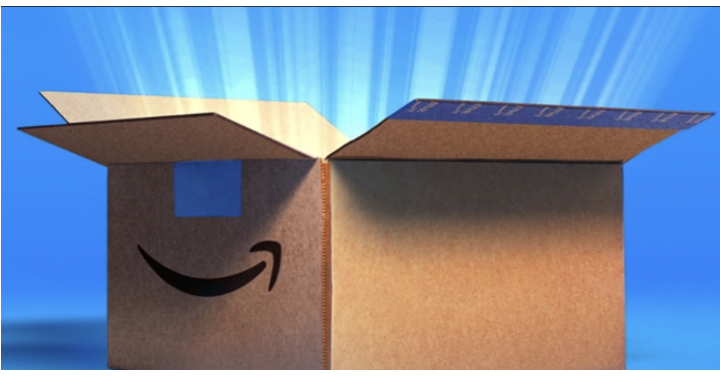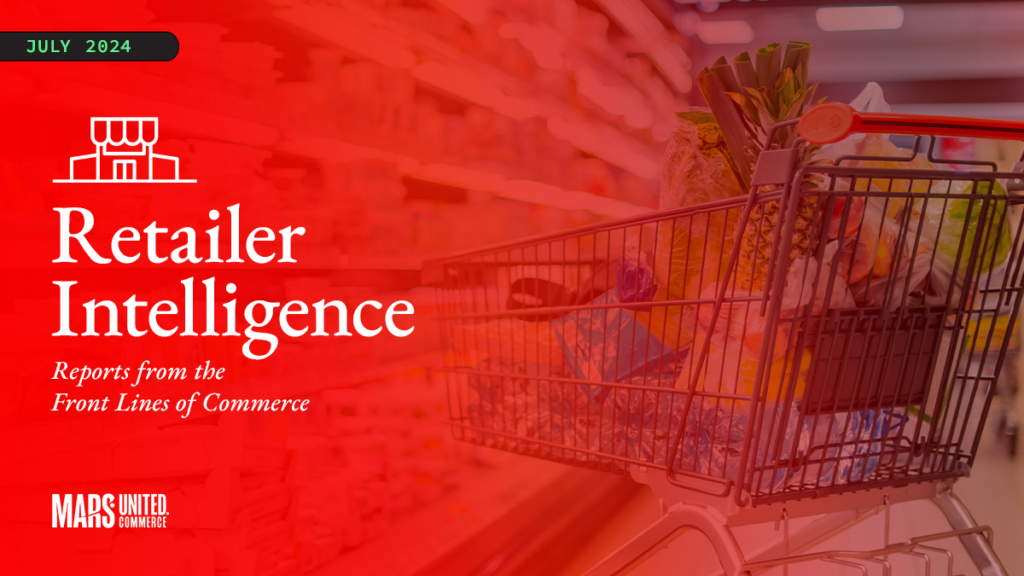By Kristin Wall and Michella Chiu, The Mars Agency
Alcoholic beverages are one of the fastest-growing ecommerce categories, having experienced exponential growth since 2019: Sales through the two most important ecommerce channels, online grocery stores and marketplaces, are now almost four times larger than they were in 2019.
This trend is showing no signs of slowing down: Ecommerce is expected to continue as the No. 1 driver of category growth for the next decade, and therefore has become a critical component of brand building, awareness and trial.
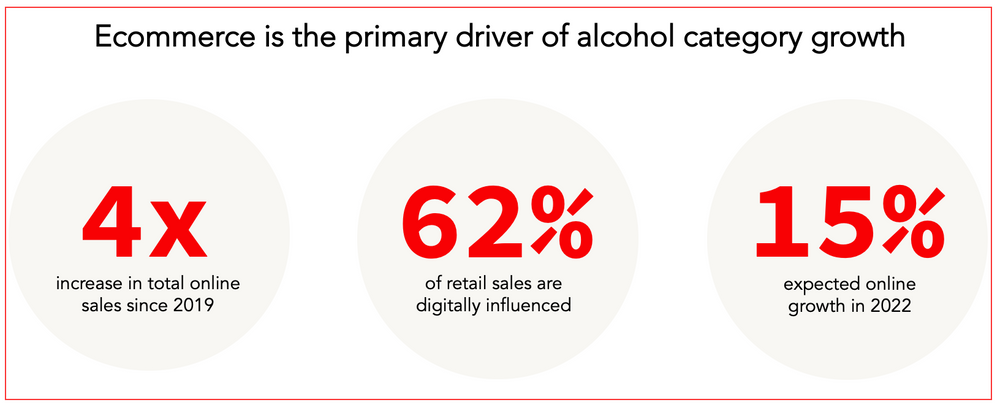
What’s more, alcohol is not only a major driver of online shopping trips, it’s also a significant contributor to basket size, customer retention and online grocery sales overall. In addition, from a fulfillment standpoint, alc-bev items are easy to pick — therefore, when combined with the category’s high price point, online sales of alcohol are more profitable than just about any other CPG category.
For decades, alcohol marketing has been siloed and disconnected, with brands working under the idea that, “One day, they’ll buy” rather than trying to guide consumers along the path to purchase. But after enjoying this triple-digit growth over the last two years, brands are now looking at ecommerce not only as their primary growth driver, but also as an opportunity to digitally influence and drive sales in brick-and-mortar stores.
Brands that don’t invest in a strong online product portfolio risk losing out to their competitors. To win, brands have to optimize their assortment. They also have to expand their distribution to include multiple fulfillment options that align with the shopper need for buying what they want, where they want how, how they want — whether that’s curbside pickup, local delivery or ship to home.
Most importantly, brands must think about customizing and improving the online shopping experience for alcohol. More than 80% of online shoppers are looking for a frictionless cross-device experience, and nearly half of alcohol buyers shopped the category online for the first time in 2020.
Therefore, premiumization in the category has shifted from on-premise to online. Brands need to effectively replace the on-trade brand experience with an in-home one, investing more in digital advertising as well as online content such as recipes or cocktail-making tips. Through omnichannel digital activation and local market collaboration with distribution partners, brands can optimize and build lasting brand equity in the digital ecosystem.
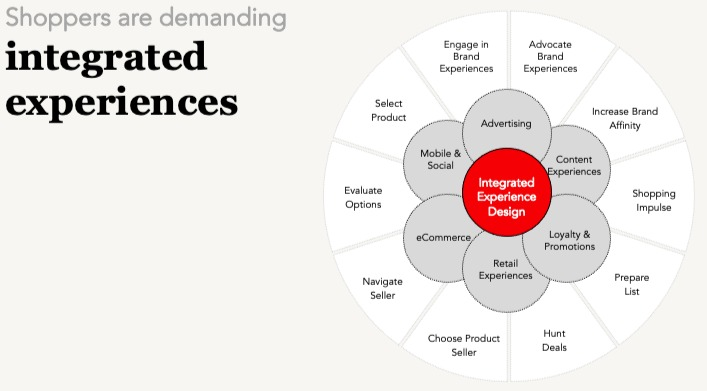
The ability to search and shop for products across any channel, anytime and anywhere, has dramatically changed the relationship between shoppers and brands. Omnichannel engagement has never been more essential than it is right now. And to be effective, it must focus on the entire customer experience, not just the individual experience in each channel.
Shoppers also expect digital commerce to be a better alternative to shopping offline. That might be a QR code on the bottle that leads to a related cocktail recipe. Or it might be a food blogger creating shoppable stories to help customers discover and buy products they love. Or it might simply involve leveraging brand assets holistically online and offline to create a unified shopper experience.
Having that holistic view is not only important for getting a better understanding of shopper behavior, it’s also important for serving relevant content and connecting the various touch points along the path to purchase.
The traditional path to purchase was viewed as distinctly ordered tasks and touch points that were either consumer- or shopper-focused. The integrated shopper experience has cohesive touch points that span tasks and focuses on experiences that blend the consumer and shopper mindsets.
What to Do
How can brands leverage these online learnings to develop a connected omnichannel strategy?
By connecting the dots between brick-and-mortar and ecommerce, between physical and digital shelves, and physical and digital media. And they need to make that work harder across channels and shopper touch points.
On average, omnichannel shoppers spend four times more per year with the same retailer compared with single-channel shoppers, and they spend roughly 30% more per purchase. So connecting those dots requires brands to think and plan differently.
Shoppers look for frictionless experiences that save time, reduce obstacles and provide an enjoyable experience. For brands to win, they must connect the dots across multiple capabilities and:
- develop a 360-degree view of their shoppers and growth opportunities.
- learn how to deliver the right message, at the right time, in moments that matter.
- activate a fit-for-purpose, data-enabling, shopper-centric strategy.
- adopt new ways of working to enable a single source of connected commerce.
- develop the talent and capabilities needed to not only scale growth but drive impact.
What can seem like a simple, straightforward goal on the surface — getting the right product in front of the right shopper at just the right time in the journey — actually involves a highly complex web of thousands or even millions of different data points. But despite all the changes taking place in the journey, shoppers still expect a seamless, connected experience.
Below is just one example of what an omnichannel marketing strategy might look like. Let’s say a social media user sees a product while going through the platform. They click on an ad, and they’re redirected to a website’s landing page that contains product information, details, ratings & reviews, etc.
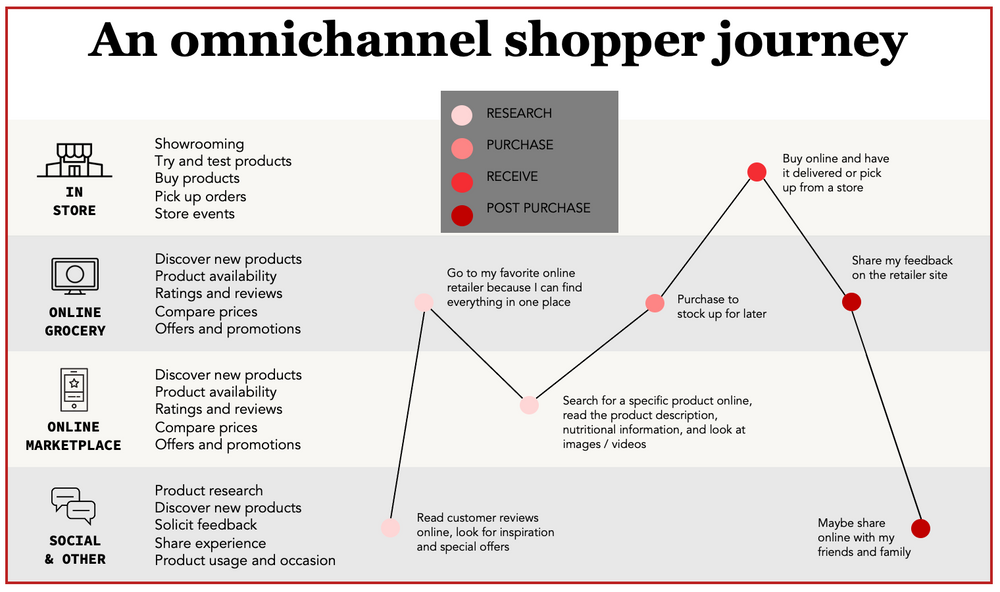
They add the item to their cart, but then they get distracted before placing their order. A few days later, they receive an email reminding them about the item in the cart with an attractive incentive that encourages them to complete the purchase. So the user goes ahead and completes the order and chooses in-store pickup as the delivery method. But then the marketplace also proposes that the user download its mobile app to get delivery updates in real time.
Finally, the user picks up the item from the store, but as a follow-up several weeks later, the marketplace will prompt the user through social media or an email to share their feedback or write a review online.
Therefore, success now requires alcohol brands to turn all those different touch points into a holistic strategy. And they can do so by making three key strategic shifts:
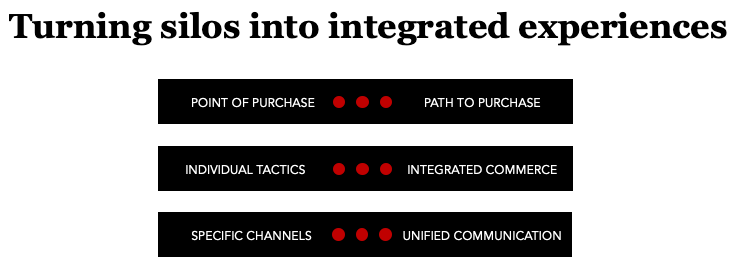
1. Point of Purchase to Path to Purchase
Brands need to enable this seamless transition by bringing the store to digital and digital to the store.
A growing trend among shoppers is to conduct research online before heading out and buying in person. Loyalty in these situations may seem negligible, but if you have an authoritative voice for your product and provide shoppers easy ways to buy, they will trust you moving forward.
Shoppers who feel like they’re making informed decisions can help increase sales not only online, but in store: Providing detailed product information helps drive visitors to your physical retail locations as well.
But you also can also extend the value of your brand and your product assets across multiple touch points, whether it’s an endcap or other in-store display, or a product detail page, or social media, using them to bridge the retail shelf with the digital shelf through a fully cohesive experience.
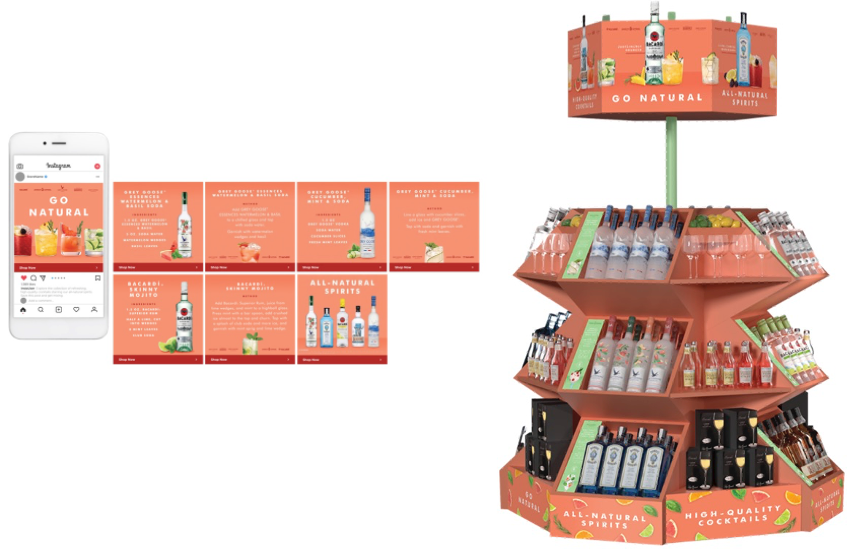
2. Individual Tactics to Integrated Commerce
Online sales models for alcohol are becoming more diverse, which is leading shoppers to increasingly shift between channels and retailers at any given moment according to their immediate needs.
To maximize budgets, digital media spending must be focused, efficient and effective. Channel selection should be based on scale, targetability and task effectiveness. Content should be focused on the attributes the potential audience is looking for when shopping online. Knowing that health has become top of mind for consumers and brands, for instance, there’s an opportunity to emphasize the benefits of specific functional claims with shoppers who are seeking products that align with their lifestyle needs.
Shoppers are looking for inspiration, and brands have a unique opportunity to develop content based on their interests: flavor profiles, food pairings, or past purchases.

3. Specific Channels to Unified Communication
This requires brands to embrace hybridity and engage in cross-functional planning. They must find opportunities for connected commerce and align the relevant parties to:
- Seek scale by continuously finding new ways to drive efficiencies.
- Extend and expand activation opportunities by connecting assets, budgets and campaigns.
- Design shopper-centric experiences that deliver the right message, at the right time, on the right medium.
- Reduce complexity and increase relevance around processes and ways of working to drive clarity that will facilitate consistency for shoppers across all communication.
Best-in-Class Examples
1. When the Bota Box Breeze product line first launched in February 2021, it successfully earned promotional banners on the front page and aisle landing page of Kroger.com (see below). The same product image in the banner ads appeared on the Product Detail Page, moving shoppers along the path to purchase.
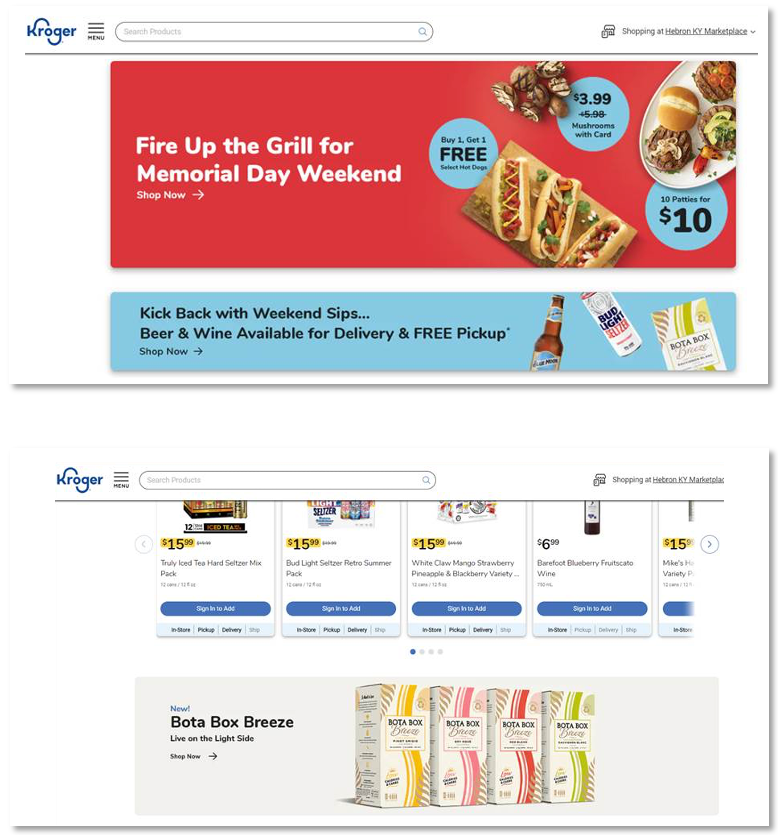
With the right SEO strategy in place, the digital planogram on the left below creates an impression on the search results page, especially when the product hero images are the same style. This is similar to the way that the retail planogram uses product blocks to make an impression in the physical store, as you can see below right.
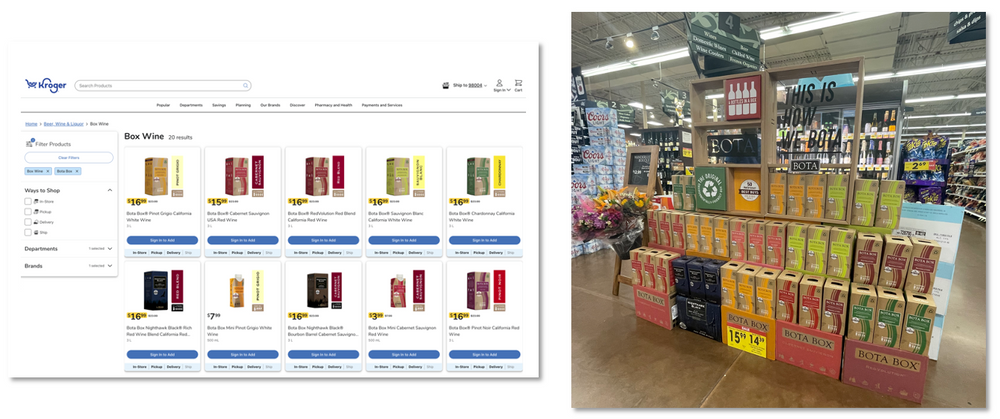
2. The Chateau Ste. Michelle banner ad below mentions brand accolades using the same imagery that appears on shelf talkers in the physical store at retailers like Walmart. This creates familiarity and consistency for shoppers.
Our internal research finds that younger demographics — younger millennials and Gen Z — love to use their phones in the physical store compare prices and check product details online. This makes it even more important for brands to have the same pricing and product information available in both places.
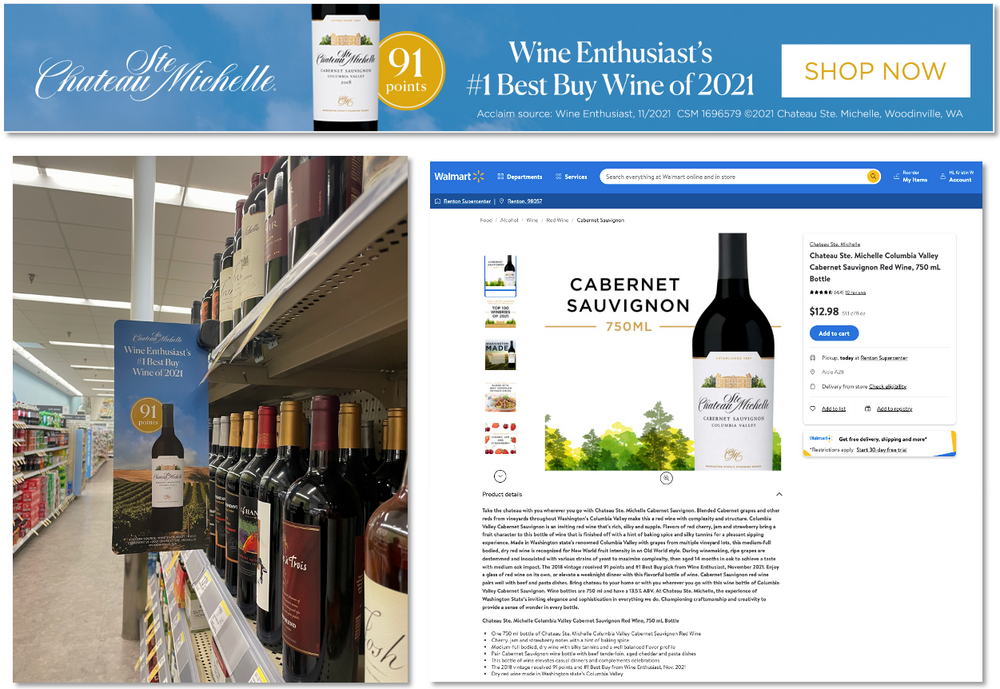
Future Forecast
As for where the category might be heading, there are many possibilities. But here are two scenarios very likely to happen — because they’re already taking shape.
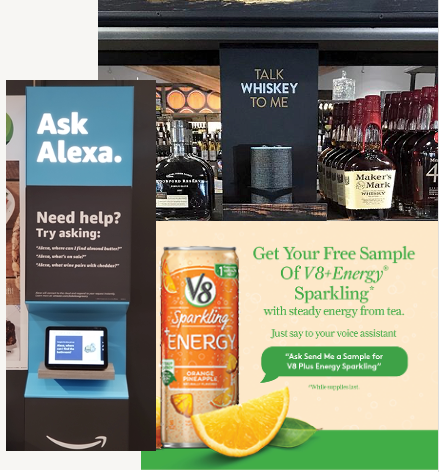
1. More shoppers will look for an immersive multi-sensorial experience. Many of us already consider alcohol to be a multisensorial experience due to the aromas and flavors involved. But with technology such as voice-activated devices, audio can now be added to the experience.
In stores, voice-enabled shelf talkers can make on-the-spot product recommendations, while people shopping at home can simply use existing devices such as Google Home, which can also be used to request a product sample. These immersive, multi-sensorial experiences can happen everywhere.
2. The industry will continue using “big data” to make personalization scalable. We’ve already lived through “Personalization 1.0,” which involved bottle engravings or custom labels placed on wine bottles to use as a corporate gift, for example.
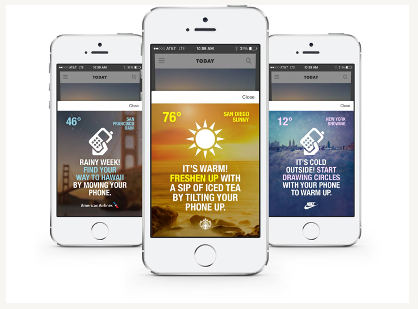
We’re now moving into Personalization 2.0, which involves targeted advertising and product recommendations based on a consumer’s palate profile — made possible and scalable through big data and artificial intelligence. Where this already is happening, we’re seeing promising results.
Big data also allows us to think outside the box in terms of shopping occasions. For example, we’ve generated some promising results with brands running promotions during Summer Solstice, which is the longest day in the year and often the hottest as well.
How to Level Up Your Brand
With these new paths to purchase comes increased competition, which makes it more important than ever for brands to optimize their digital marketing strategy by taking a holistic approach. Here are three guiding principles The Mars Agency uses to inform holistic decision-making:
1. Be human-centric. The more you understand the shopper that you’re trying to reach, the better chance you have of driving conversion.
2. Think “experience” rather than “plan.” Each activation tactic plays a unique role, but they need to connect seamlessly.
3. Match the medium with the message. Know what needs to be communicated at each stage as shoppers move along the path to purchase.
The Mars Agency used the framework below to help our clients develop the actionable strategies they need to drive growth.
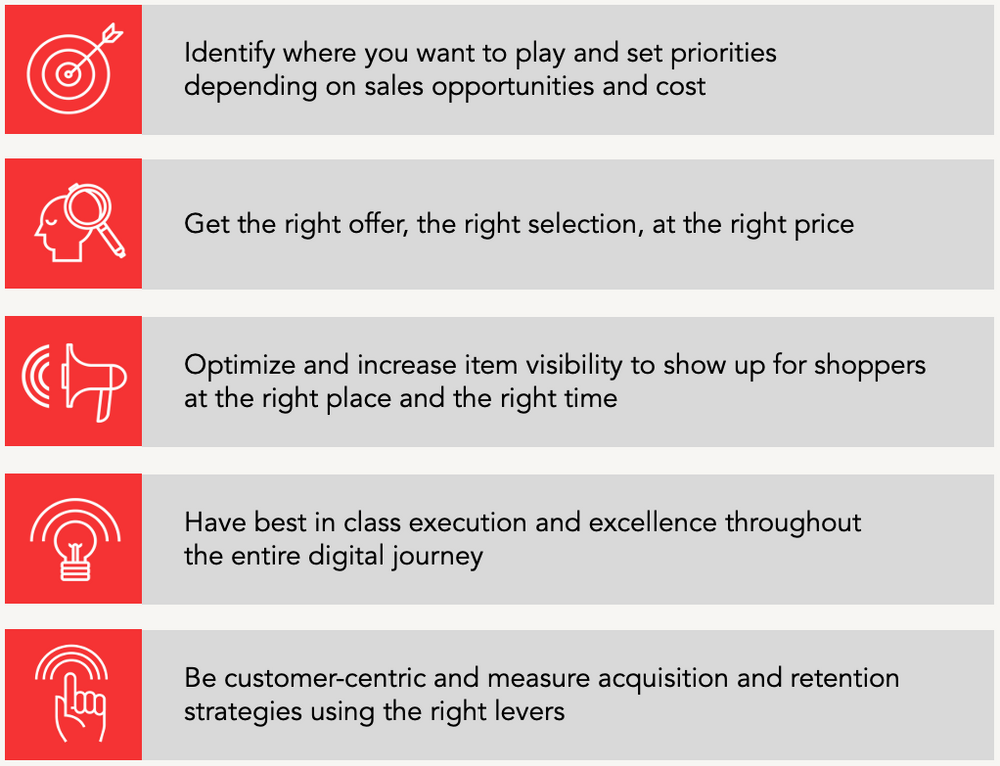
We also suggest that brands:
- Capitalize on every opportunity to drive sales by making all touch point shoppable.
- Design content to give each customer individual, personalized attention whenever possible.
- Find out what works best on each platform and continuously reshape the content to match.
- Carry out frequent testing to better understand shopper behavior and determine what tactics can drive scale efficiently.
About the Authors

Kristin Wall is Senior Director of ECommerce at The Mars Agency, where she lead the digital shelf center of excellence and helps brands navigate the art and science of creating connected shopping experiences.
A marketing leader with 14-plus years of experience in digital strategy, she has built innovative and compelling programs that create impact by developing a thorough understanding of the consumer, the growth opportunities, and the challenges.

Michella Chiu is Director of Ecommerce at The Mars Agency, where she leads eCommerce projects and digital activation in all wine segments. With a background in marketing and academic research, Michella is a sommelier of wine and spirits who holds a WSET Level 3 Advanced certificate.
She is currently pursuing designation as a Certified Wine Educator (CWE), a certification currently held by fewer than 600 professionals worldwide.


